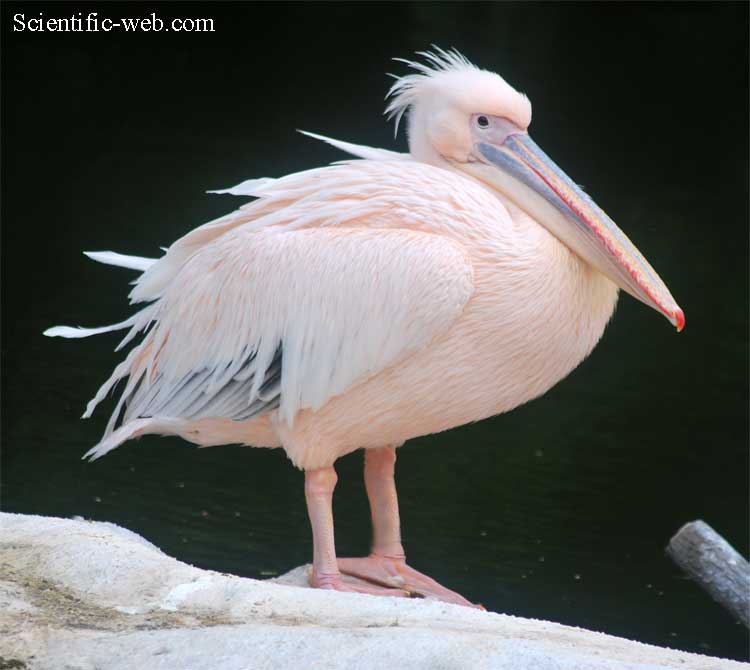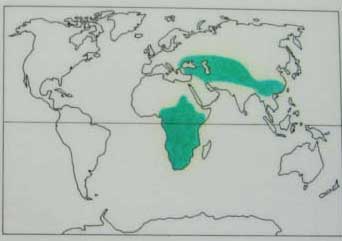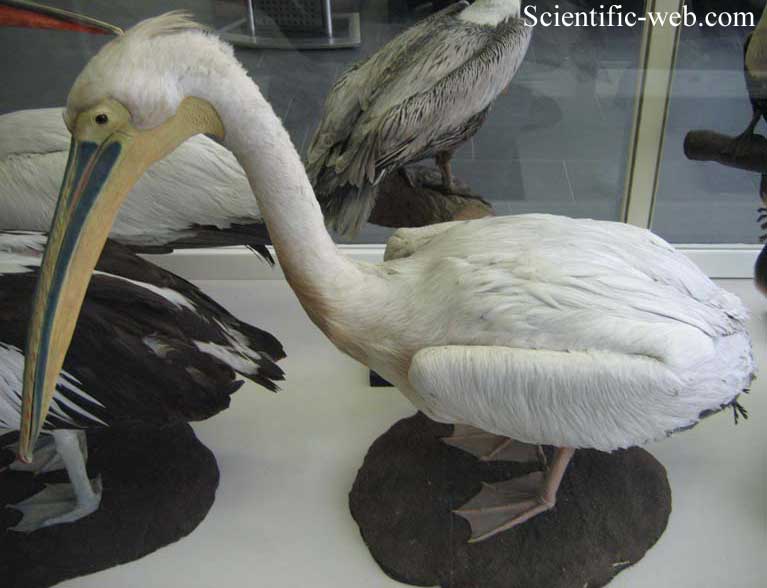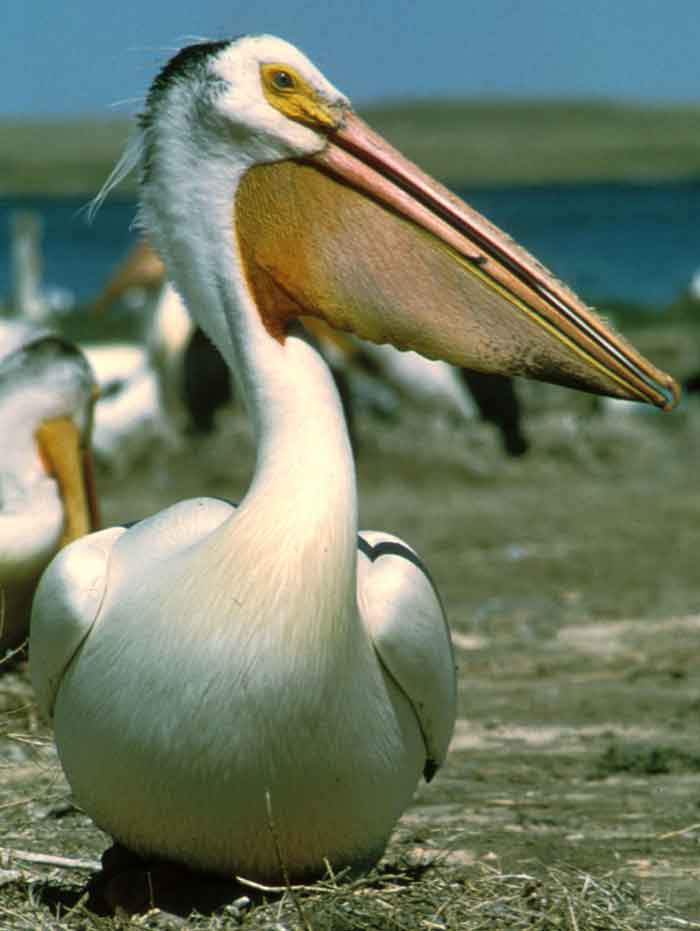Pelecanus onocrotalus, Photo: Michael Lahanas Cladus: Eukaryota Name Pelecanus onocrotalus Linnaeus, 1758 Vernacular names
Systema Naturae ed.10 p.132 ---------- The Great White Pelican, Pelecanus onocrotalus also known as the Eastern White Pelican or White Pelican is a bird in the pelican family. It breeds from southeastern Europe through Asia and in Africa in swamps and shallow lakes. The tree nest is a crude heap of vegetation. Description This is a large pelican, at a mass of 10 kg (22 lbs), 160 cm (63 in) long and with a 280 cm (110 inch) wingspan. It differs from the Dalmatian Pelican, the only larger species of pelican, by its pure white, rather than greyish-white, plumage, a bare pink facial patch around the eye and pinkish legs. Males are larger than females, and have a long beak that grows in a downwards arc, as opposed to the shorter, straighter beak of the female. Immature birds are grey and have dark flight feathers. In flight, it is an elegant soaring bird, with the head held close to and aligned with the body by a downward bend in the neck. In breeding condition the male has pinkish skin on is face and the female has orangery skin.[1] Distribution and habitat More than 50% of White Pelicans breed in the Danube Delta in Romania. This pelican migrates short distances, wintering in northeast Africa. This species is often kept in captivity, or in semi-wild colonies such as that in St. James's Park, London. Their ancestors were originally given to Charles II by the Russian Ambassador in 1664 which initiated the tradition of ambassadors donating the birds.[2] Behaviour Pelicans catch fish in their huge bill pouches, while swimming at the surface. They also eat amphibians, crustaceans and small birds. Like the Dalmatian Pelican, this species has declined greatly through habitat loss and persecution. Status The White Pelican is one of the species to which the Agreement on the Conservation of African-Eurasian Migratory Waterbirds (AEWA) applies. References 1. ^ Mclachlan, G. R.; Liversidge, R. (1978). "42 White Pelican". Roberts Birds of South Africa. Illustrated by Lighton, N. C. K.; Newman, K.; Adams, J.; Gronvöld, H (4th ed.). The Trustees of the John Voelcker Bird Book Fund. pp. 23–24. Source: Wikispecies, Wikipedia: All text is available under the terms of the GNU Free Documentation License |
|




